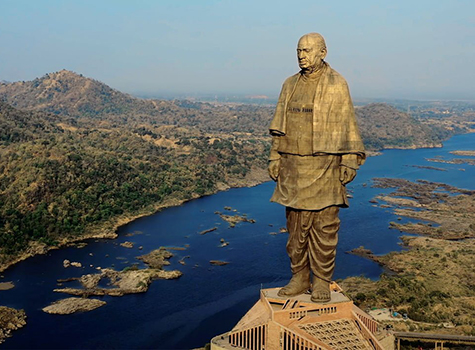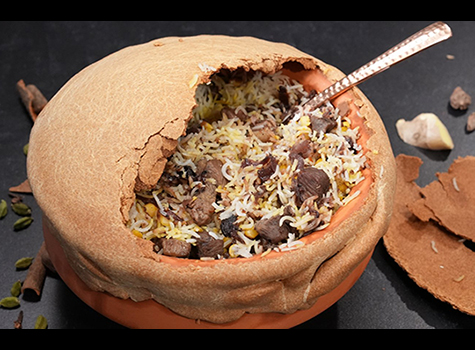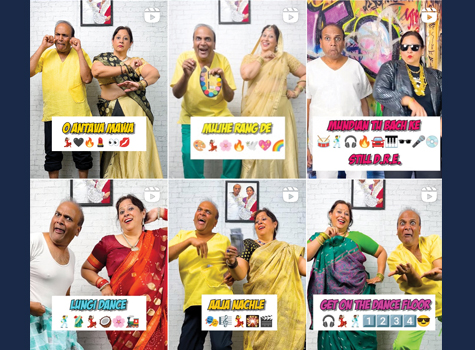
We just celebrated the 17th anniversary of “Dances of India”. Thanks to our community for making this show a huge success again keeping up the record of selling out for 17 years. These classical dances are very difficult to learn. Thanks to the students and parents who are dedicated to these classical dance forms and are eager to teach their children about Hindu religion and the stories from the scriptures.
In an era of “Instant Gratification”, where people just want to see their children on the stage quickly, it is very humbling to see many parents following the path of cultural education, and a long-term commitment to these classical dances. Irrespective of what some may say, in my experience, the demand for classical dances has not diminished. It is so wonderful to see hundreds of people still showing up to see these classical dances and cherishing these unblemished arts.
This year we highlighted different aspects and dances of Lord Shiva. I thought I should share these stories with you as well. The most popular, mystic, and beautiful Lord is Shiva also known as Mahadeva. We depicted stories of Lord Shiva protecting his devotees. He is one of the most dynamic representations in Hinduism. The most famous of Lord Shiva’s dances are the Thandava dances. These dances are used to direct mortals on the path of renunciation of the ego to gain true knowledge and salvation. As you may know, according to Hindu religion, the Supreme Lord of the dance is Shiva, third of the Hindu trinity. Shiva represents that aspect of God who creates good (true knowledge) and destroys evil (ignorance). He is the source of cosmic harmony and rhythm.
There are three aspects of Lord Shiva’s Thandava dances, namely: The Destructive, The Yogic and The Gift giving. In the first aspect of Thandava, He dances on the burning grounds, with ten arms, denoting great power, celestial and miraculous. Shiva dances as the destroyer of illusion. The burning grounds symbolize the hearts of humans, cleansed by the fire of knowledge to destroy ignorance. This dance is very invigorating and powerful. It requires tremendous agility and great stamina as it is choreographed with difficult Karanas or poses demanding flexibility and strength of the dancers.
The second aspect of Shiva’s dance is the Yogic-evening dance performed on Mount Kailash. It is known as Sandhya Thandavam. This dance reflects calm and beauty of a gorgeous sun set in the mountains. As we experience this yogic evening dance, it allows us to surrender the worldly ambitions, sorrow, ego, fear, and pride. The music is usually very relaxing and very rhythmic in nature.
The third aspect of dance is the Gift giving. Lord Nataraja represents the third aspect. This is the mystic dance of Lord Shiva, danced before the golden assembly in the Golden Hall of Chidambaram or Thillai in Chennai, South India. The very meaning of the Chidambaram is crucial to understand its significance. Chit means the heart or consciousness. Ambaram means universe, the heavens, or hall. At age five, this is where my dream to become a classical dancer has begun. There is a famous dance called Natanam Adinar in Bharatha Natyam style that describes the Ananda (Happy) dance of Lord Nataraja in this Golden temple. Some of the 108 Karanas or poses as shown in the temple are often used to choreograph this powerful dance. Learning the Karana movements is part of every dance student’s syllabus. Dr. Padma Subrahmanyam has made a tremendous contribution to the dance world by studying all the sources describing the Karanas and reconstructing and documenting them.
We also performed Lasya Thandavam in Kuchipudi dance style. The dance performed by Shiva’s wife Parvathi in response to Shiva’s Thandava is known as Lasya, in which the movements are gentle, and graceful. This was a dance drama. Therefore, we set the scene. We depicted Goddess Parvathi dancing joyfully with her husband Lord Shiva. The great divine powers joined them as their orchestra. They were accompanied by Lord Vishnu on Mridangam drum, his wife Goddess Lakshmi as the singer, Lord Indra on flute, and Lord Brahma as the Nattuvannar or as the conductor using cymbals. Many devotees and Gods assembled on Mount Kailash to witness this cosmic dance. This dance represents love of Lord Shiva for his wife Parvathi. His smiling face, reflecting love, and compassion represent his dual personality of God and Goddess, who is the gentle gracious entity with powerful nobleness.
Such dance dramas truly immerse audience and takes them back in time. I just wanted to share these mystic stories with my ardent readers.
If you are planning to visit India this summer, try to visit some of these thousands of years old temples. These amazing archeological sites may become the spiritual sites for all dancers.
———-
For questions or comments contact Maha via e-mail at: Gingrichmaha@gmail.com
Posted: Monday, June 24, 2019



